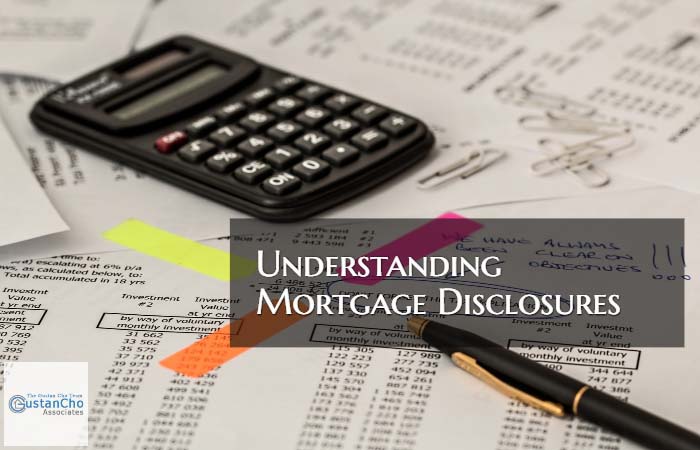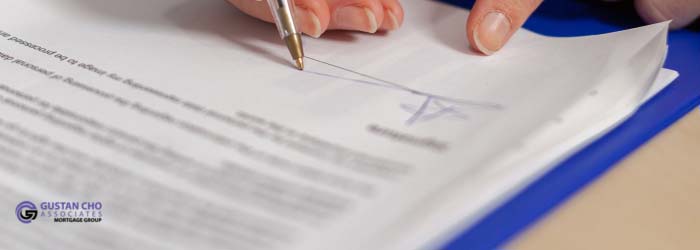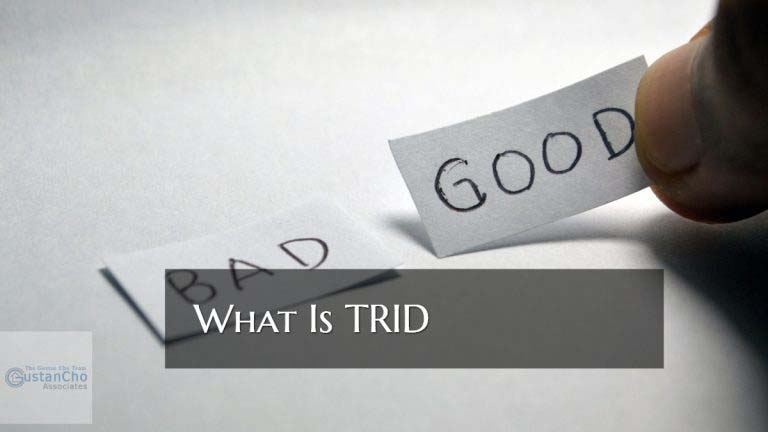This BLOG On Understanding Mortgage Disclosures And Regulations Was UPDATED And PUBLISHED On March 2nd, 2020
Borrowers planning on applying for a mortgage loan, whether it is a home purchase loan or a refinance, be prepared to be overwhelmed with dozens of paperwork:
- Borrowers need to sign and review before the mortgage loan application mortgage process can proceed
- Our regulators and politicians have mandated that proper disclosures need to be disclosed
- Understanding mortgage disclosures are necessary
- All disclosures need to be properly dated
- If the date on disclosure is off by a day or two, lenders need to re-disclose or otherwise they are under RESPA violations and can be fined, censured, or have their licenses revoked
- Many loan applicants are the actual victims of the overwhelming paperwork
- This is because politicians and regulators have teamed up and made this mandatory
- Politicians created and implemented red tape because they thought it was the best interest of the public
- I totally agree in issuing full disclosures
- However, it is very difficult to understanding mortgage disclosures
- This holds even to licensed mortgage professionals
In this article, we will discuss and cover Understanding Mortgage Disclosures And Regulations.
Mortgage Application Process
I’ll first review the standard mortgage application, a.k.a. 1003 (Ten 03), officially known as the Uniform Residential Loan Application. This might be the most important step and the most important mortgage closing documents, leading to a smooth and problem-free process or a bumpy, frustrating process.
The application includes several important sections that collect information, personal finances, and the details of the potential mortgage. Borrowers will provide personal information such as Social Security Number, Date of Birth, Marital Status, and contact information. During this process, borrowers must provide documentation on income, expenses, assets, and liabilities.
Borrowers need to disclose if they have any pending legal problems or current issues affecting finances. This, and a credit report, will help the lender assess the ability to pay the proposed mortgage. Borrowers also need to provide information on home or potential home purchases. The loan officer should provide a pre-approval/pre-qualification letter stating the number of loan borrowers pre-approved for. This is a top-end number, and the purchaser needs to decide if they want to max out the purchase and if they can live comfortably with that payment.
Important Mortgage Closing Documents
Once the application is finished, borrowers will receive The Loan Estimate (LE). The LE will summarize the costs associated with the loan. Examples of the LE are the cost and fees such as the appraisal, credit report, title costs, and pre-paid items(ex: property taxes and homeowners insurance). The GFE summarizes how much money borrowers will need in bank accounts at closing, this includes closing costs and down payment. The TIL is part of the Consumer Credit Protection Act and requires lenders to give information on the following:
- Loan Origination fees
- payment schedules
- borrowers’ rights to rescind the application within a certain timeframe without being charged
- The act requires lenders to give borrowers a LE within three business days of a loan application
The old Good Faith Estimate and Truth In Lending Disclosures are not Loan Estimates. The Closing Disclosure has replaced the old HUD-1 Settlement Form. This Statement will show borrowers all fees and services associated with the closing of the home loan, which typically will range from 2% – 6% of the loan amount.
Other Mortgage Closing Documents
The mortgage note is very important. This is the document of mortgage closing document that borrowers will sign at the closing, which states borrowers will promise to pay back the loan according to the terms in which agreed upon. The Mortgage Trust Deed is the legal document that transfers the deed to a trustee(third party) to hold a security for the lender.
Once the loan gets paid off, the trustee transfers the title back to the borrower. The house is the lenders’ security that borrowers will repay the loan. If failure to pay off the mortgage occurs, the lender can sell the house to pay off the debt. The seller signs the deed at the closing to transfer ownership to the buyers.
The title will be supplied to home buyers in the form of a copy because the 3rd party will hold the original until the mortgage is paid off. The statements will state and have borrowers affirm that all the information provided is true. This is where it says borrowers will live in the house, and it will be the primary residence. This also will have borrowers sign that they will keep the house in good repair.
Regulations On Understanding Mortgage Disclosures
Mortgage regulators and the Federal government mandates lenders to provide a series of important disclosures within 72 hours of triggering TRID.
- Understanding Mortgage disclosures need to be constantly provided to all loan applicants before, during, and after loan application and closing process
- Understanding Mortgage disclosures can sometimes be difficult
- But the federal government uses its own mandatory forms that needs to be disclosed to the mortgage loan applicant
- They require this because they feel by providing complex disclosures will protect public consumers
- This holds true even though the majority of the public do not understand nor read the full lengthy paperwork
Many just want to know where they sign.
Understanding Mortgage Disclosures Prior To Closing
Once borrowers sign and submit their 1003 mortgage loan application their loan originator or broker has 72 hours, or 3 days, to give them a series of loan documents also known as mortgage disclosures.
Loan Estimate
The Loan Estimate is a mandatory document that a loan originator or broker needs to provide consumers within 3 days or 72 hours upon submitting an official mortgage loan application. Loan Estimates will state and disclose the following:
- Annual Percentage Rate, also known as APR
- The total amount of mortgage financed
- Proposed monthly housing payment
- The total of all of your payments
- The total of all finance interest charges
- Late payment fees and charges
- Pre-payment penalties if applicable
Since the inception of the SAFE ACT, pre-payment penalties cannot be charged by residential mortgage companies.
Settlement Costs And Information
Another disclosure loan originators need to disclose is the Settlement Costs and Information booklet:
- This was developed and issued by the United States Department of Housing and Urban Development
- The purpose of this booklet is to explain to consumers the types of fess and costs a consumer is likely to incur for taking out a home loan they are applying for
The Loan Estimate
The purpose of the Loan Estimate or LE is to itemize and break down the overall settlement charges and costs.
- Most Lenders over disclose the estimated fees and costs on the LE
- This is because if a loan originator underdiscloses, they need to cough up with the fees and costs
- This holds true even though they have nothing to do with the third party charges
- Any charges or costs of 10% over the charges or costs listed on the Loan Estimate, the lender is responsible for those charges
Here is the items that are listed on the Loan Estimate:
- Total mortgage loan origination fees
- Credit report fees and costs
- Appraisal and inspection fees and costs
- Buy down points for the reduced mortgage rate
- Pro rate mortgage interest expense
- Homeowners insurance and mortgage insurance premiums
- Third party title search costs and fees as well as title insurance premiums
- Document preparation and recording fess and costs
If the lender is planning on selling the loan servicing rights to the home loan, which is collecting and managing monthly payments and escrows, the mortgage company also needs to disclose the Transfer of Servicing Disclosure Statement. This mortgage disclosure informs borrowers about the mortgage company’s potential right to transfer the right to service the mortgage loan to a different third party servicing mortgage lender.
Initial Escrow Account Disclosure
The Initial Escrow Account Disclosure needs to be disclosed to the mortgage loan borrower. The initial escrow account disclosure will state the following:
- Borrower’s escrow account requirements
- Cash from borrower due at closing
Post Closing Mortgage Disclosures
Once borrowers have closed on their home loan, their loan originator will provide borrowers with another set of mortgage disclosures for them to review and sign.
- Borrowers will need to review these new docs with the initial sets of disclosures that were given earlier
- If you see any drastic differences between the two documents, then notify the loan originator to explain the discrepancies
Final CD Of Settlement Costs
The Final Closing Disclosures of Settlement Costs will disclose the final costs and settlement charges and the final closing expenses incurred by borrowers. Borrowers will also get a private mortgage insurance disclosure which specifically explains the terms of private mortgage insurance and the benefits to the lender. Appraisal notice disclosures need to be disclosed to the borrower as well that states consumer right to obtain a copy of an appraisal report.
Income Documentation And Qualified Income
Qualified income is one of the most important factors during the mortgage process. The following income documents are required by the mortgage underwriter:
- Recent W-2s of past 2 years
- Copies of signed two years federal income tax returns
- Most recent paystubs (two)
- Need 30 days of earnings
- Most recent means paystubs that are the most up-to-date and available at the time of application
In cases where a borrower works the following jobs:
- seasonal or nontraditional work
- self-employed
- receives commissions and/or bonus income
If borrowers work above type wage earner jobs, additional documentation or alternative documentation would be needed:
- Check with the processor and/or underwriter
- Being proactive and collecting these things upfront
Instead of submitting incomplete documents and having the file conditioned out it saves time in making things more efficient for all parties, and also builds credibility with the customer.
What Types Paperwork And Disclosures Are Required
An FHA loan also requires additional paperwork and disclosures to be provided with the loan application such as the following:
- Important Notice to Homebuyer (HUD 92899-B)
- FHA Amendatory Clause and Certification
- For Your Protection—Get a Home Inspection
- HUD Addendum
- Homebuyer’s Choice Disclosure
- Energy-Efficient Mortgage (EEM) Program Fact Sheet
Depending on the lender, loan officer might also need additional documents that the lender requires in its own application package. Each lender have their own special paperwork and disclosures. It is important to check and verify exactly what documents are needed, as a complete package means fast approvals.
Files And Documentation
Many lenders will want the following items to be kept in the file before an application is submitted for underwriting and/or initial submission as part of your documentation as a loan officer:
- Submission checklist
- New case number (if applicable)
- HUD-92900- LT, Loan Transmittal (completed in its entirety)
- Initial and typed Uniform Residential Loan Application (URLA) (signed, dated, and completed in its entirety)
- HUD-92900-A (pages 1 and 2 completed and signed)
- Clear Government Services Administration (GSA) and Limited Denials of Participation (LDP) searches
- FHA disclosure forms (noted earlier)
- Copy of Social Security card (for streamline no income documentation loans)
- Credit report showing only credit scores and satisfactory mortgage rating
- Copy of note and deed of trust (to verify old case number and rate reduction or ARM)
- The current payoff for refinances
- Net tangible benefit worksheet
- All letters of explanations regarding collections, known gaps of employment, large deposits that are on bank statements, etc. (i.e., anything out of the ordinary)









